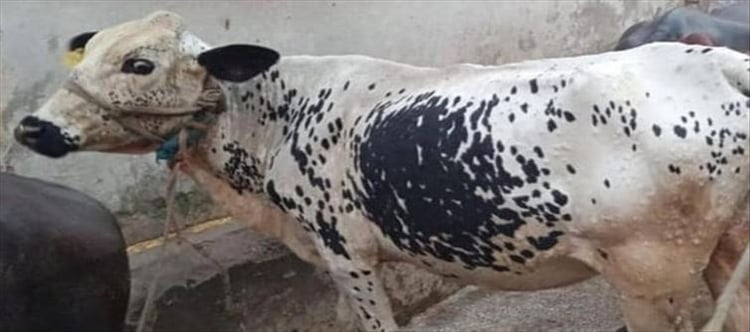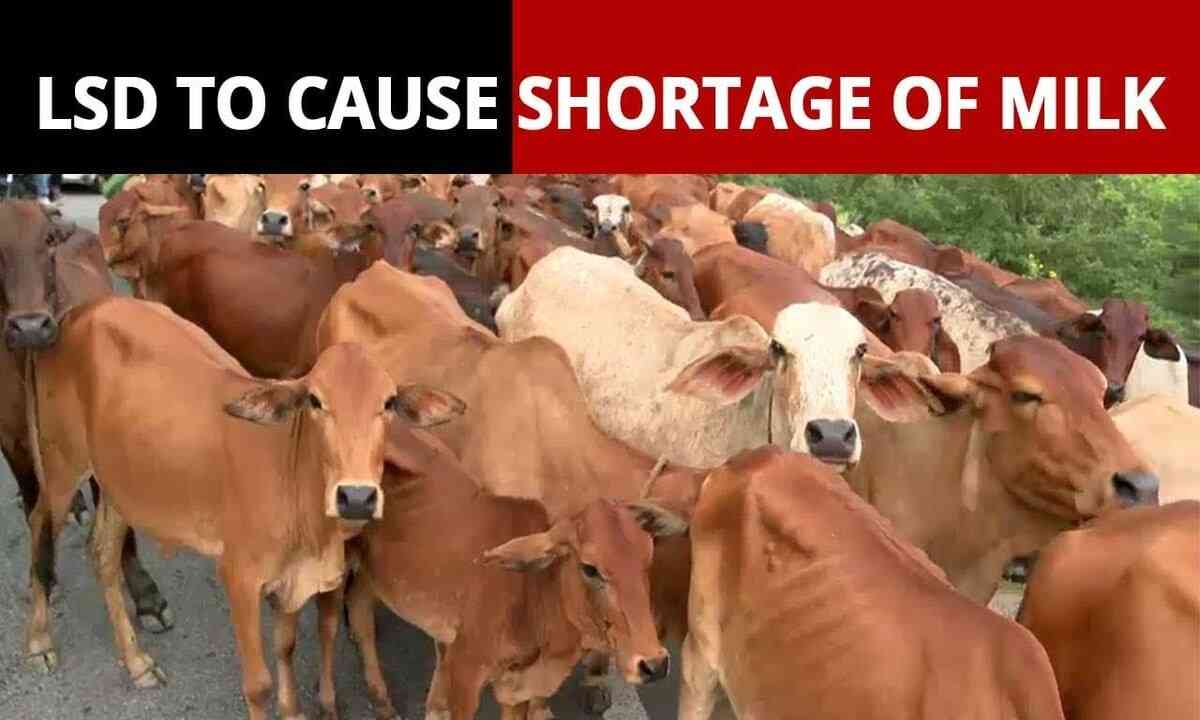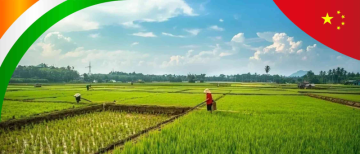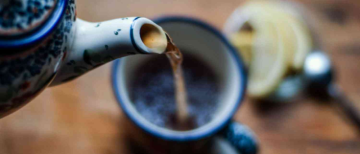Milk is becoming more and more expensive to buy all over the country, and the price may soon reach an all-time high. As a result, the largest milk producer in the world is forced to import more milk to increase supplies and alleviate pressures on the cost of living.
A rare double whammy confronts farmers: the deadly disease that causes their cows to have lumpy skin and a decrease in the number of market-ready cattle after the COVID-19 pandemic slowed breeding.

The Union Government will have a difficult time keeping retail inflation below the RBI's target because milk prices have already increased by more than 15% in the past year, reaching 56 rupees per liter—the fastest increase in a decade.
Prior to the State elections that will take place later this year, it is anticipated that the rising costs of milk and other essentials will become a political issue.
"Any potential gain risk coming from higher milk costs will represent an extra test," said Upasna Bhardwaj, boss financial expert at India's Kotak Mahindra Bank.
She stated, "Any spike could have a reasonable implication on headline inflation" because milk accounts for 6.6% of the consumer price index.
Despite rising incomes increasing demand for protein-rich dairy products, which are an essential source of calcium, vitamins, and protein for a large vegetarian population, inventories of butter and skimmed milk powder (SMP) have already been reduced as a result of a 39% increase in dairy product exports in 2022 and lower milk supplies. These factors result in the reduction of butter and SMP inventories.
Officials in the industry anticipate a 7% increase in dairy product demand this year.

However, according to a senior official of the government-backed National Dairy Development Board (NDDB), milk production is likely to have increased by only one percent in the fiscal year ending March 2023, which is significantly lower than the average annual rate of 5.6 percent over the previous decade. Because he was not authorized to speak with the media, the official declined to be identified.
Imbalances
Ramavatar Sharma, a 57-year-old farmer from the Rajasthani village of Khejri Bujurg, wants to make money from rising milk prices, but he can't find cattle that are affordable.
Mr. Sharma, who has raised dairy cattle since childhood, stated, "Steers costs have served as there are fewer cows on the lookout."
In contrast, prices have fallen in recent years as a result of the coronavirus pandemic. COVID-19 lockdowns affected milk consumption, even though cows were less expensive.
Even during the so-called flush season, which runs from October to February and is when dairies build supply for the lean season, those losses prevented farmers from increasing herds, which restricted milk supply.
According to dairy managers and farmers, the next flush season in October is the only time they can increase their inventory of market-ready cattle and dairy products.
"It is basically impossible that we can bring milk creation up in 2023," said Santosh Sharma, senior supervisor of Saras Dairy, a main provider in Rajasthan.
Devendra Shah, chairman of Maharashtra's Parag Milk Foods, claims that the unusual rise in milk prices during flush season has put unusual pressure on the market, particularly during the summer's busiest times.
Farmers and dairy officials asserted that these pressures will cause India to rely more on imported SMP, further tightening global supplies and triggering a rise in international prices.
According to officials from the dairy industry, India's SMP imports are likely to surpass 2011-12's record purchases in the fiscal year that begins in April.
According to the NDDB official, the government could ease the burden by allowing limited duty-free imports of SMP and butter, but it would need to control volumes to prevent price drops.
Even with import taxes, India's milk and cream imports increased by 1,024% in January to $4.87 million as dairy farmers increased purchases from France, Germany, and Poland.
According to the NDDB official, an additional rise in imports would result from the temporary removal of these duties.
Long-term effects
According to government data, lupy skin disease has infected millions of cattle and killed more than 1,84,000 in India, including 76,000 in Rajasthan. It reduces cow milk production and causes blisters.
Farmers in Rajasthan who were able to vaccinate their cattle to protect them from the disease now complain about lower incomes as a result of their low-yielding cattle.
Mr. Sharma said, pointing to one of his cows with wounds from the disease, "Even the cows that survived after spending a lot of money on medicines and vaccination are now producing less milk than earlier."
During the pandemic lockdowns, cattle breeding suffered because there were not enough veterinarians at the village level to perform artificial insemination.
Indian consumers are already being squeezed by supply issues.
Satyendra Yadav, a Mumbai development specialist, stated, "We have stopped adding milk to our tea just to guarantee that our kids get milk." However, if prices continue to rise, we won't be able to purchase milk.
©️ Vygr Media Private Limited 2022. All Rights Reserved.






















